Not taking into account proportions
When choosing a TV, you should start with the size of the room. If the room is spacious, a small screen will look out of place and is unlikely to please with a beautiful “picture”. If the living room is cramped, a huge TV will be too close to the viewers.
Watching TV at a distance equal to the sum of 3-4 screen diagonals is considered safe for the eyes.
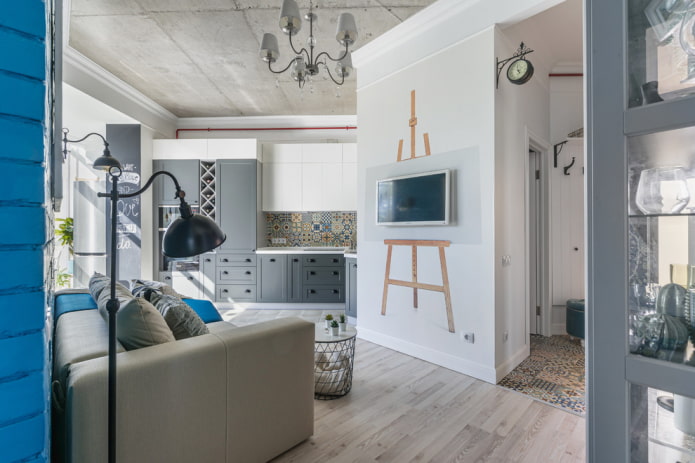
In the center of the living room
The times when the TV was considered the main decoration of the room have already passed: modern interior designers try to ensure that the equipment does not attract special attention.
If you want to harmoniously fit the device into the environment, arrange the furniture so that it is comfortable to communicate and relax. After that, you can choose a place where the screen will be convenient to watch from any point. The best assistant in this case is a swivel bracket.
Modern expensive models look like works of art, and in these cases the design is built around them.
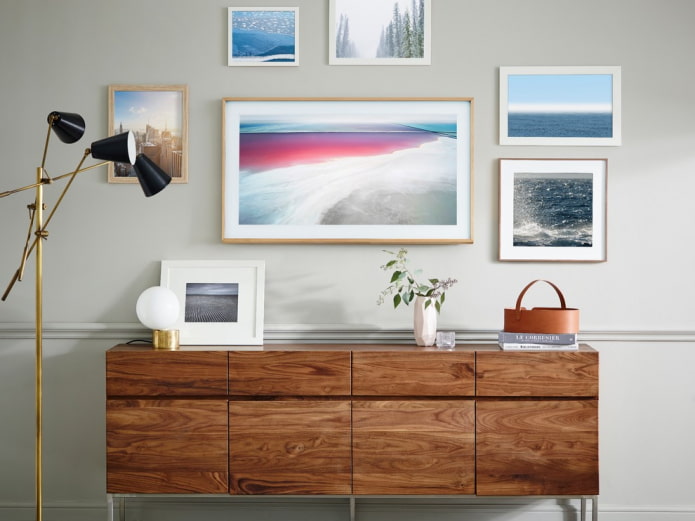
Too high or too low
One of the common mistakes that causes great discomfort is installing the TV at an inappropriate height. The device should be placed at eye level.
To choose the optimal distance from the floor, we recommend sitting on the sofa and looking straight ahead: the screen should be located opposite, so that you do not have to raise or lower your head when watching.
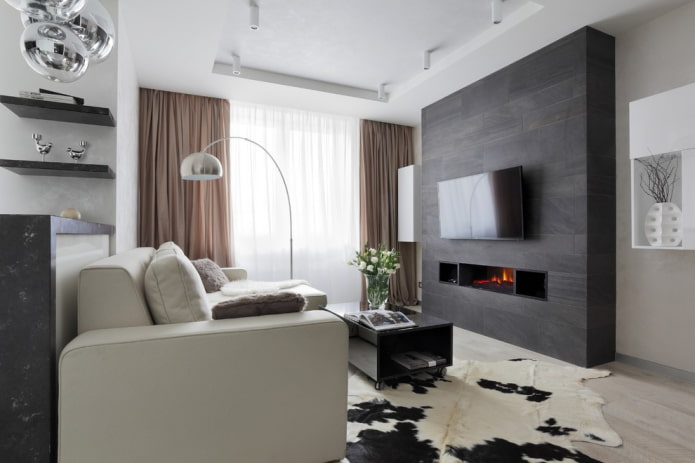
On thin walls
If the partition is made of plasterboard or any other fragile material, it is not recommended to place a TV on it. Plasterboard can withstand a weight of up to 25–30 kg, so you cannot hang a heavy device on it without additional reinforcement. Even if the thin model is lightweight, experts recommend using metal corners as a frame and butterfly dowels.
If you are not sure of the reliability of the structure, place the TV on a floor stand.
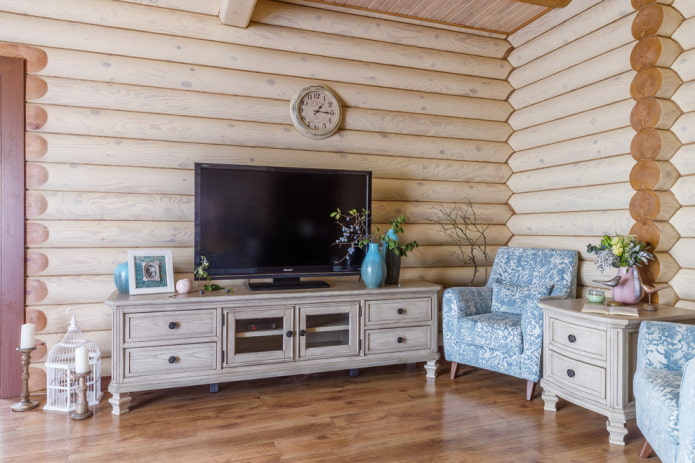
Opposite the window
If you place the screen perpendicular to the window, the light from the street will be reflected in it and interfere with viewing, and the sun’s rays will create glare. This is especially true for apartments with “southern” rooms, where the sun is a guest throughout the day.
If there is nowhere else to place the device, you can use additional roller blinds on the windows that do not let in light, or curtains made of blackout fabric.
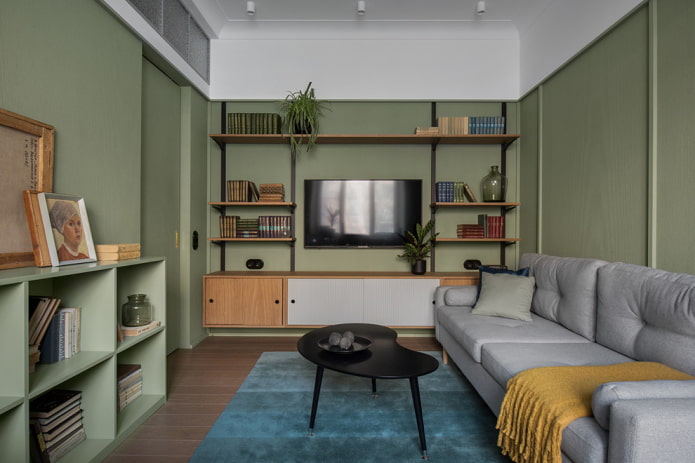
On the wall without sockets
When doing repairs, it is important to design the appropriate outlets for the TV. Experts advise installing sockets behind the monitor to easily hide cables and wires. Their number depends on the amount of equipment used.
If the sockets are far away, you will have to use an extension cord, but it will run unsightly across the room, spoiling the appearance of the room. When running cables along the outside of the wall, they should be covered with decorative cable channels.
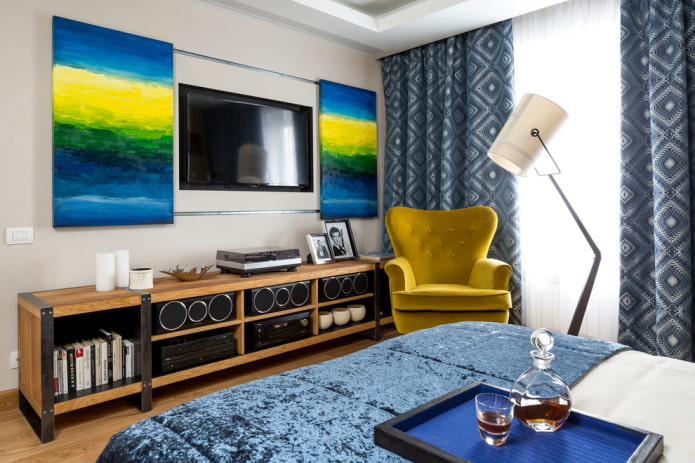
On an empty wall
A lonely black screen in the middle of free space looks strange and out of place. To make sure the TV doesn’t feel out of place, surround it with attractive neighbors. Framed posters or shelves with books will do.
The wall behind the device can be made an accent wall, decorated with wallpaper, panels, brick tiles that differ from the rest of the decoration, or create an artificial niche from cabinets. It is desirable that the background be dark – this will improve visibility.
If you fit the TV into a minimalist interior, the device can do without companions.
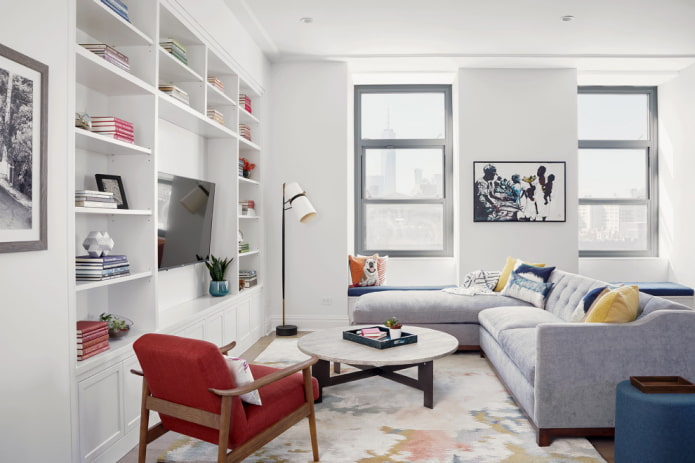
Watching TV should be safe and comfortable. Using our recommendations, you can easily find a suitable place for the electrical appliance in your living room.
Now reading:
- tips for budget-friendly bathroom renovations that will make your bathroom look stylish.
- Boho Interior Design: 58 Inspiring Photos and Recommendations
- Blue and blue shades in the nursery: 60 photos and ideas for interior design
- Black wallpaper in the interior: more than 80 modern ideas and photos of wall decoration
- Beige wallpaper for walls: more than 70 current photos and inspiration.